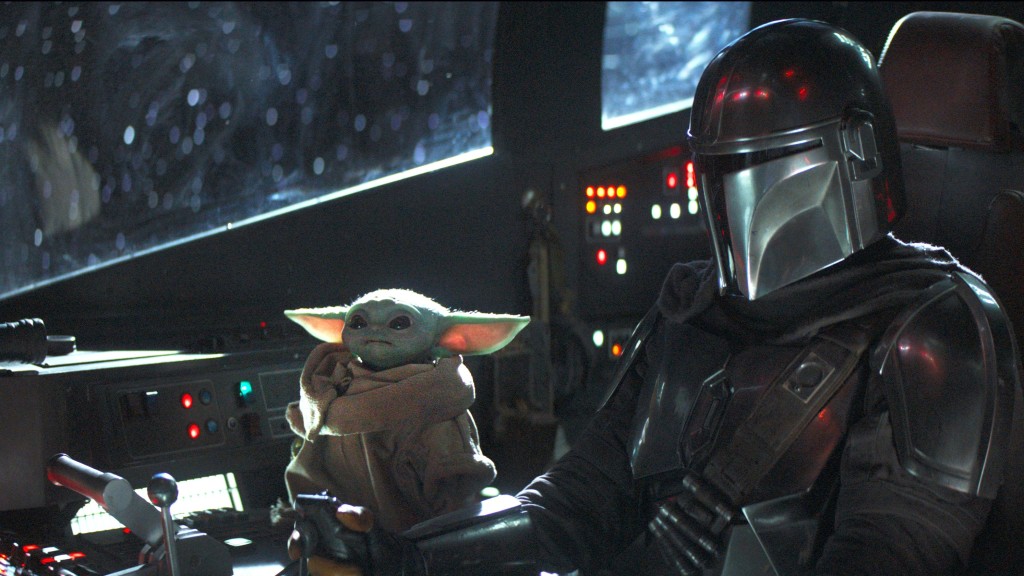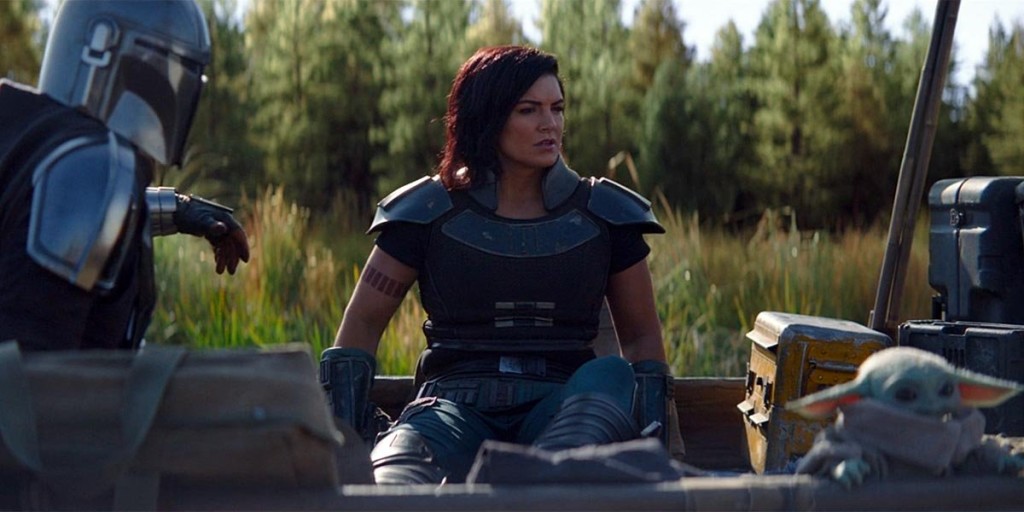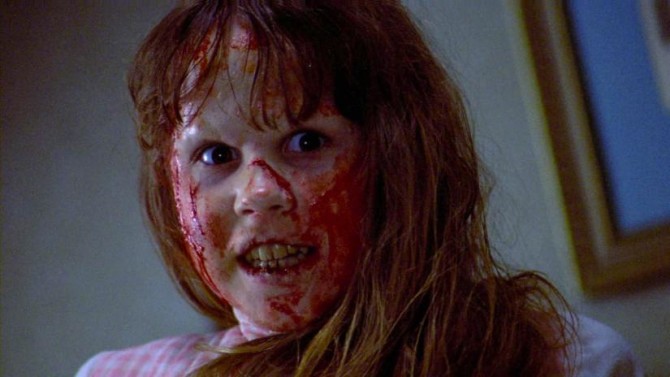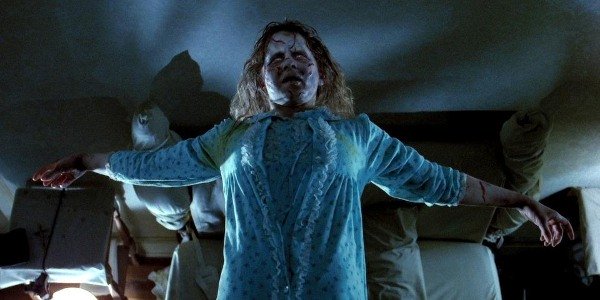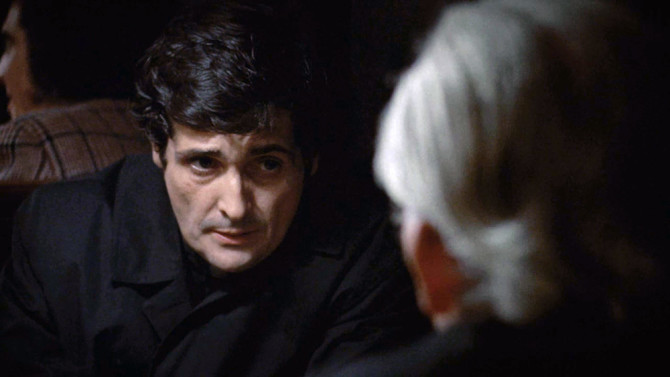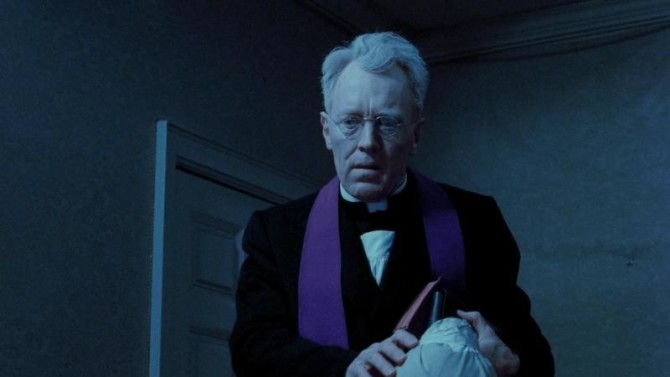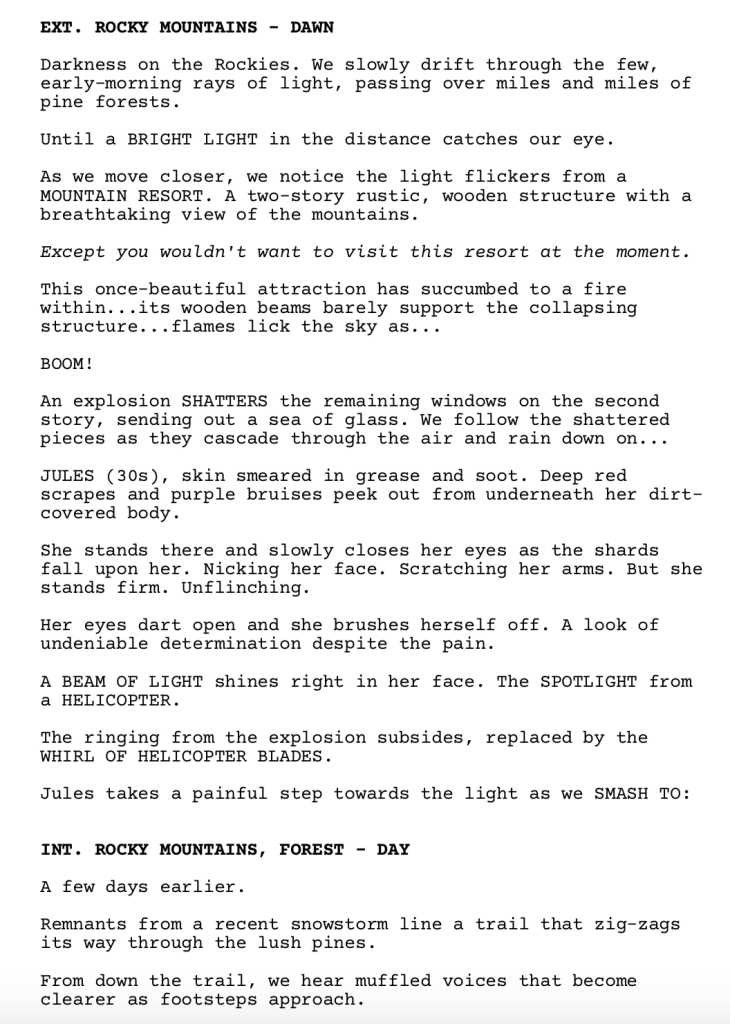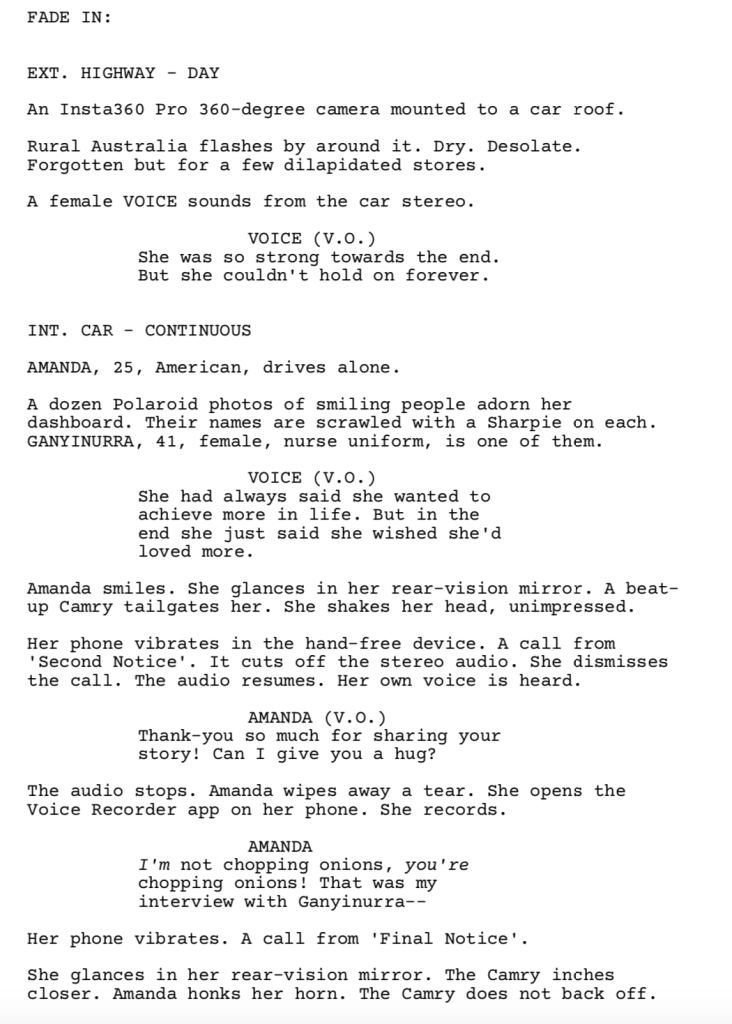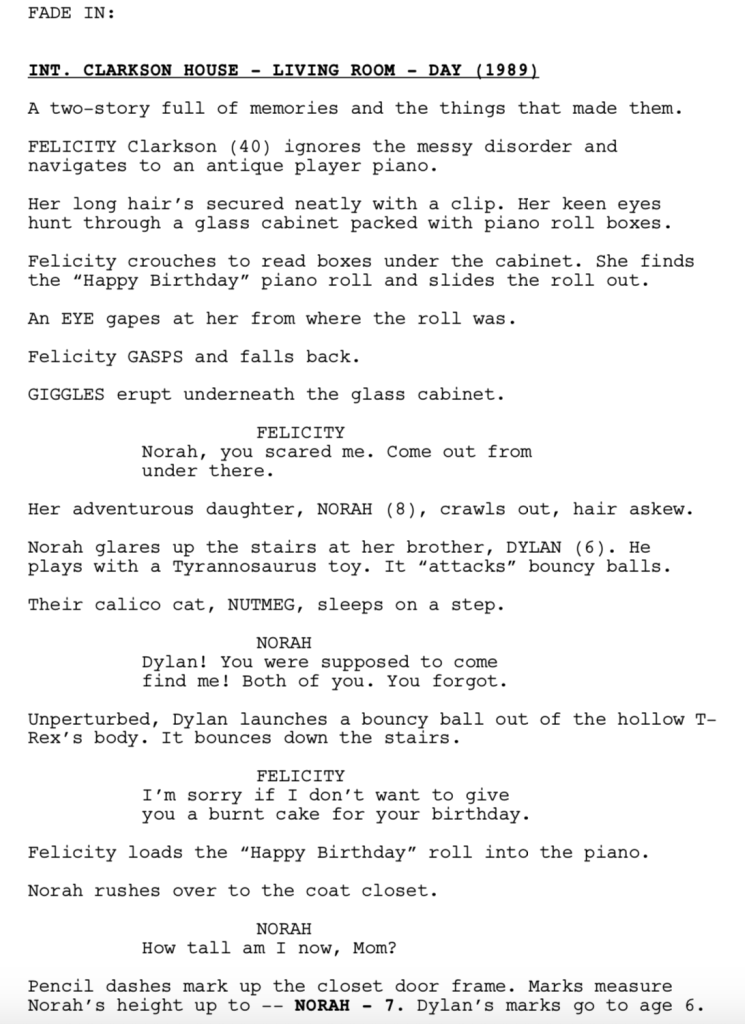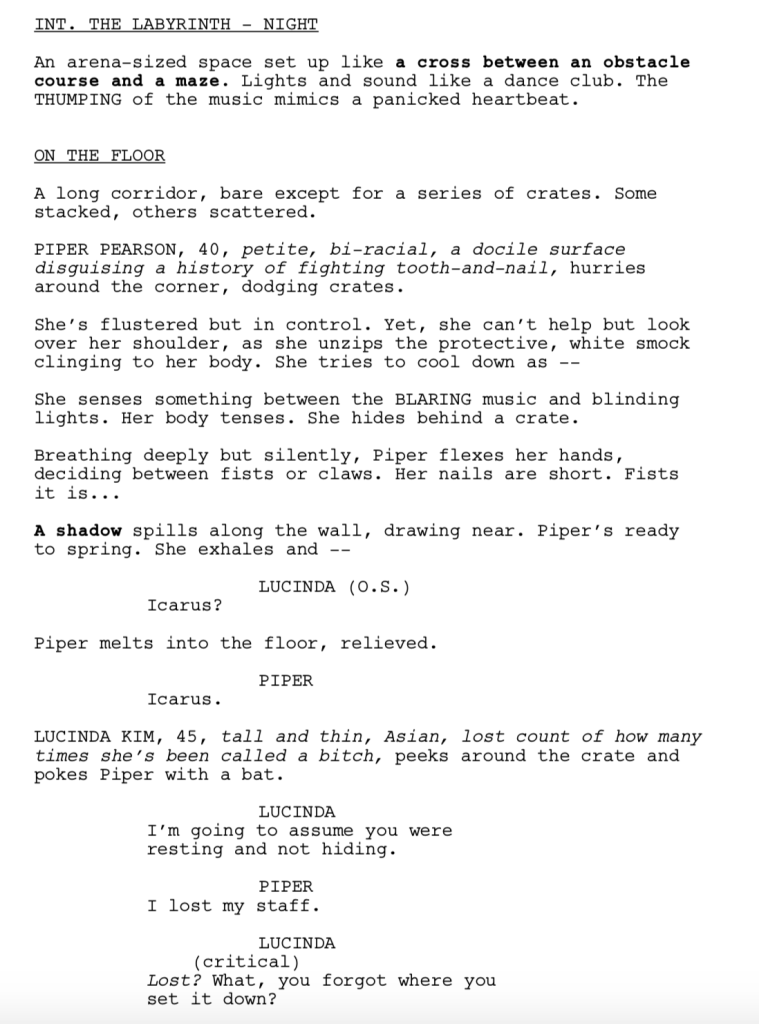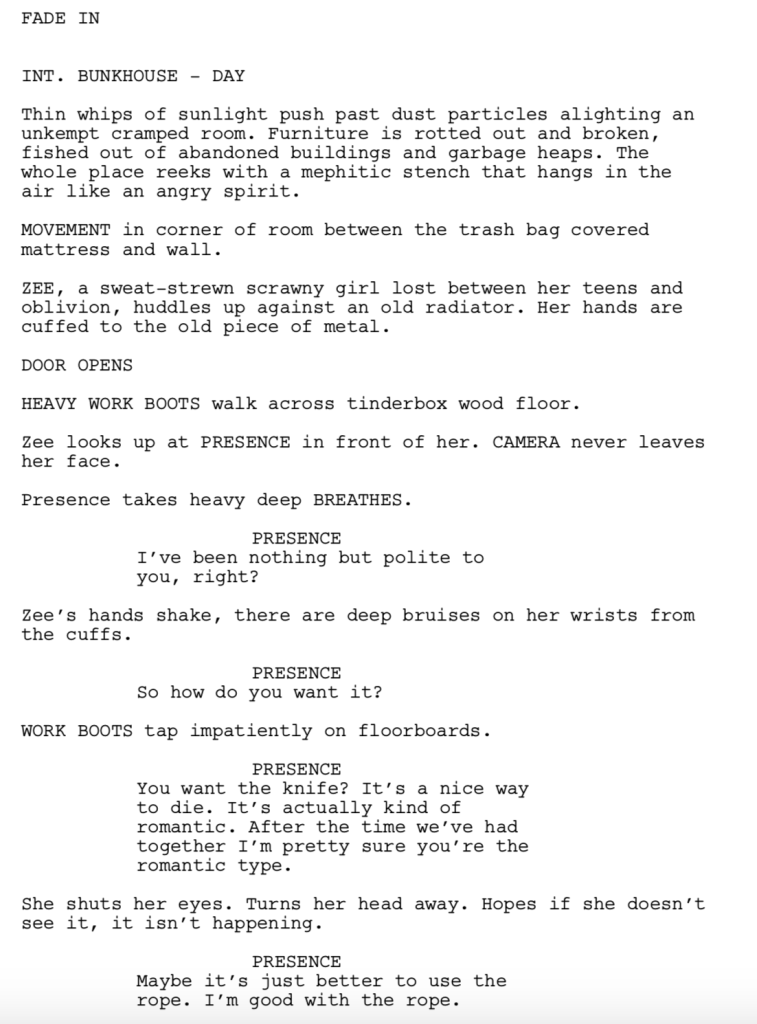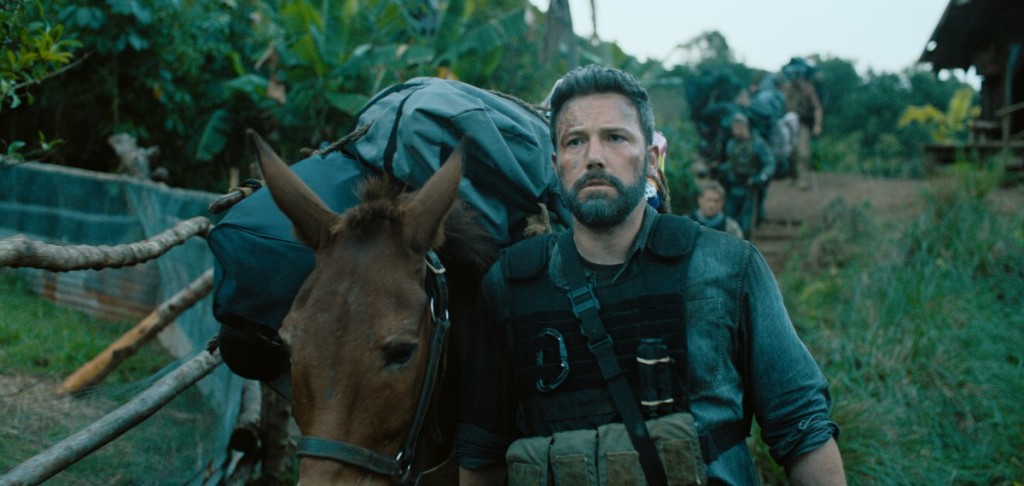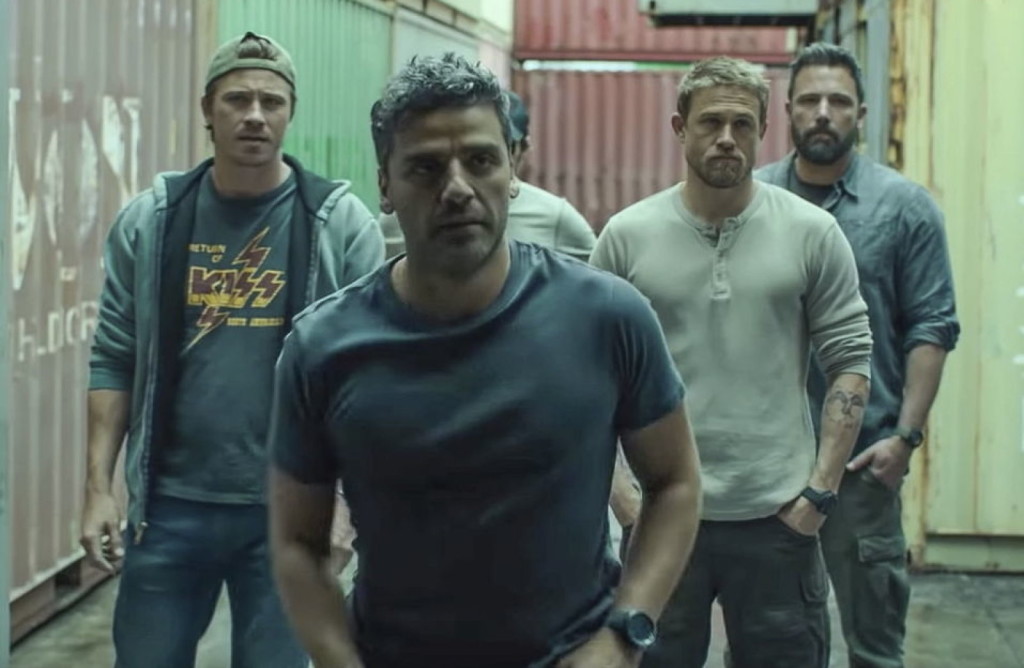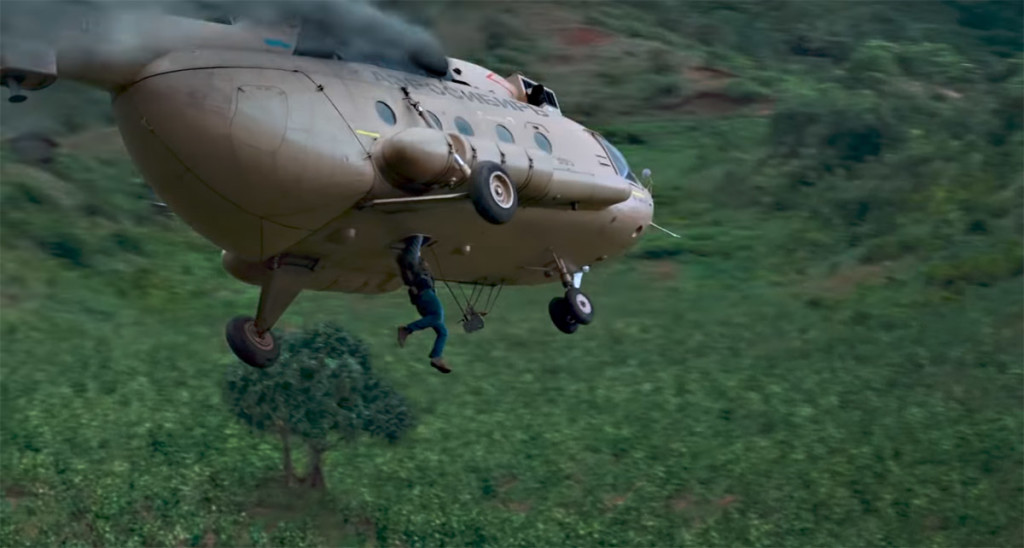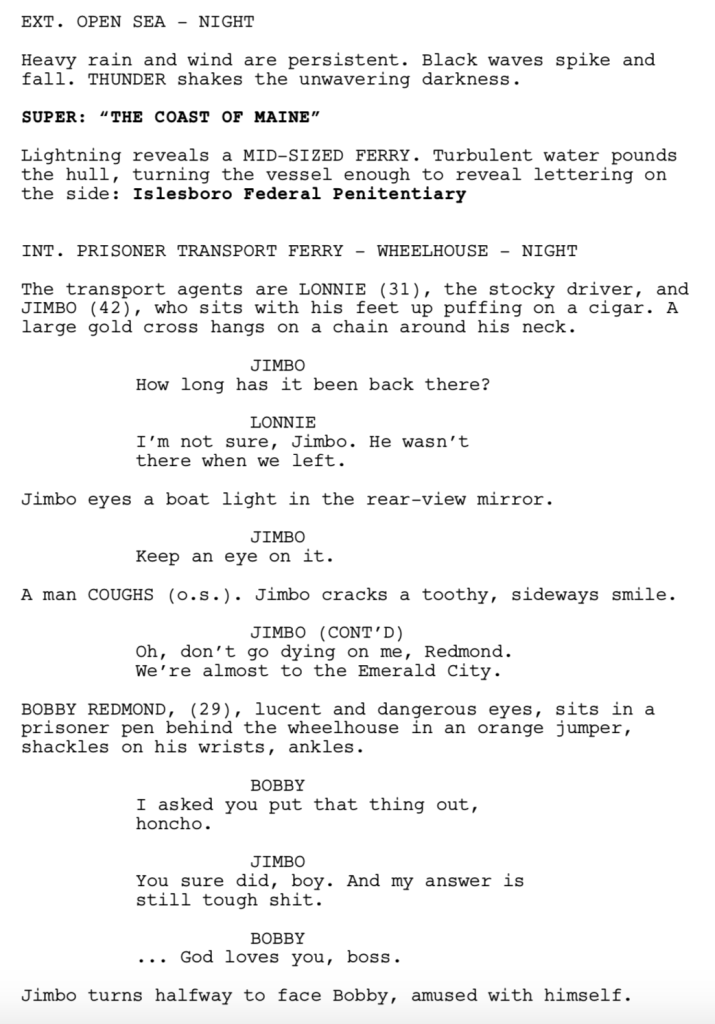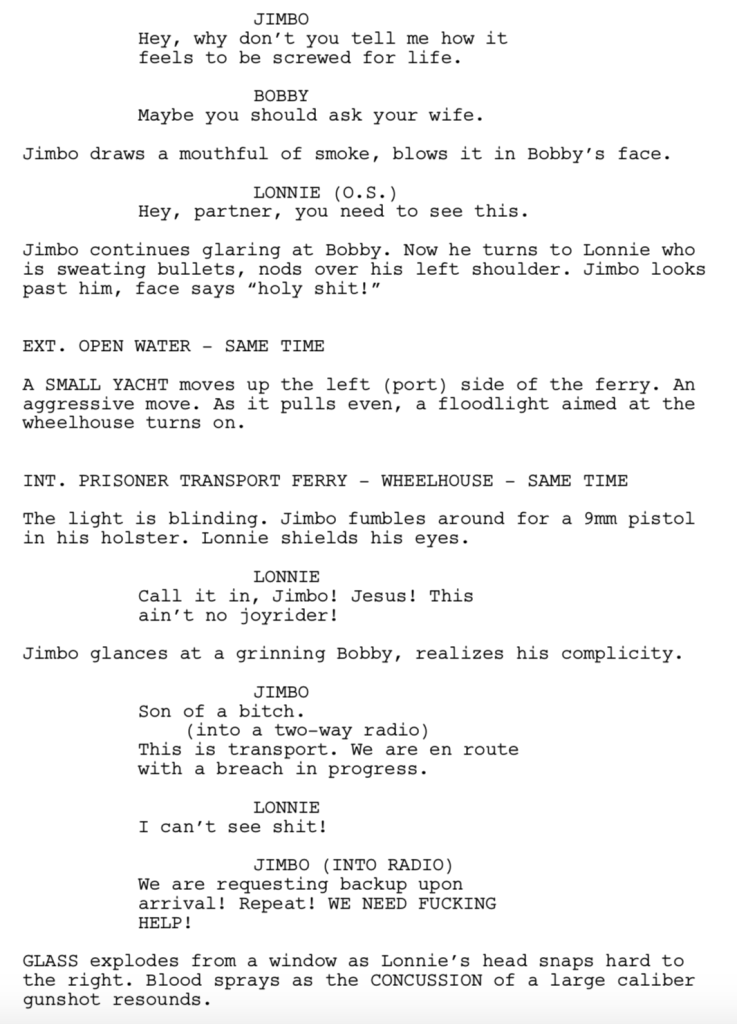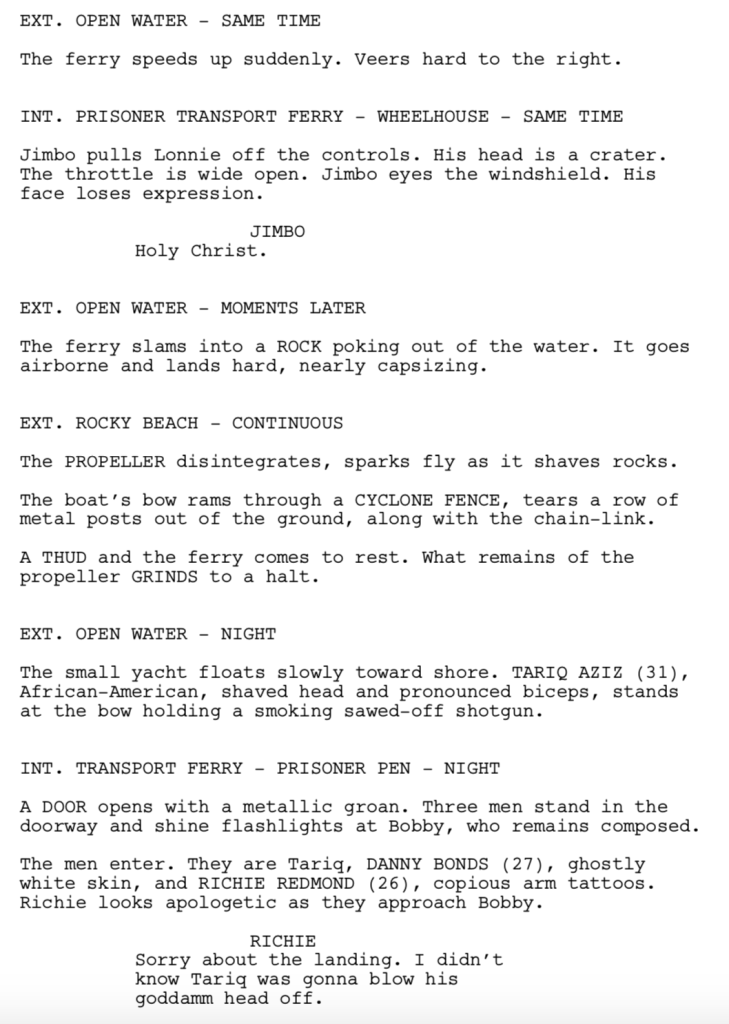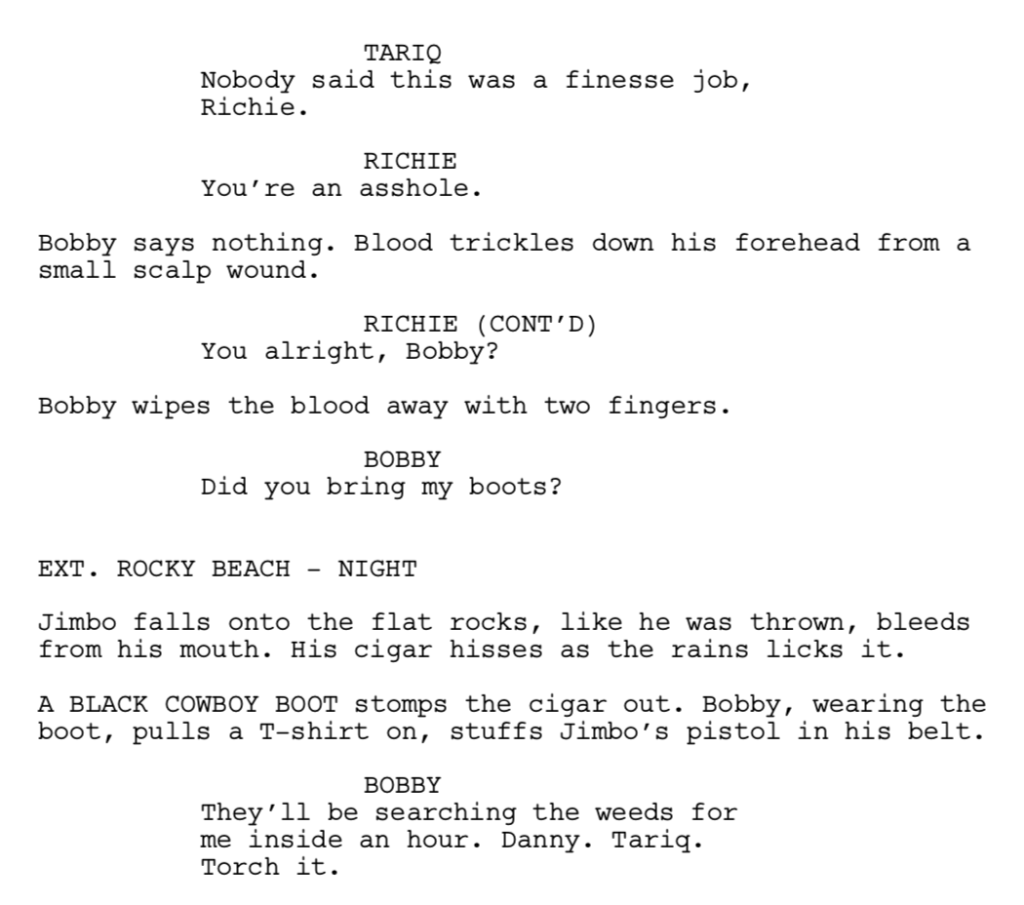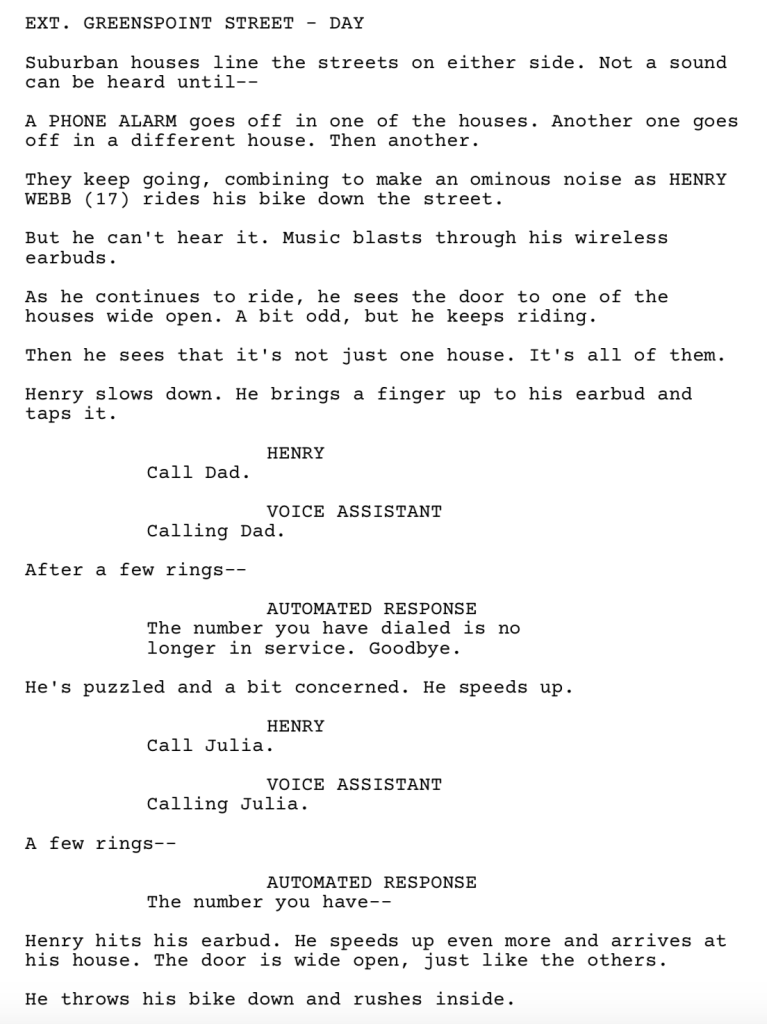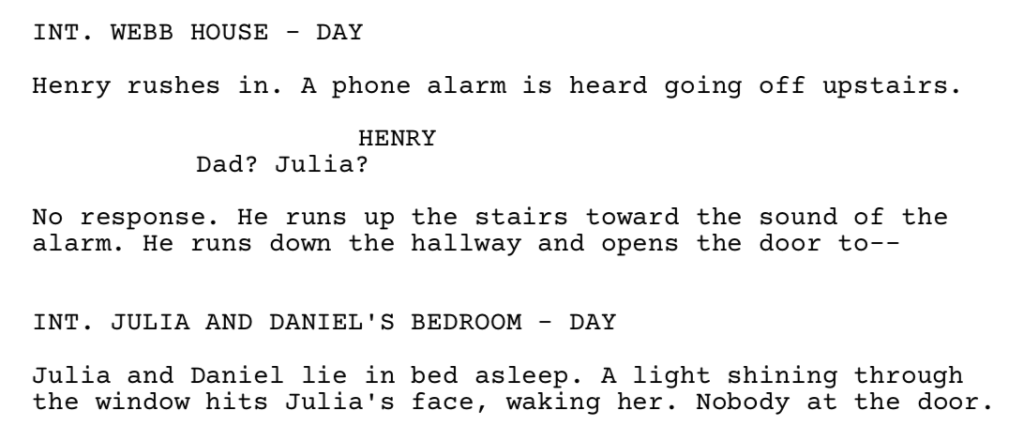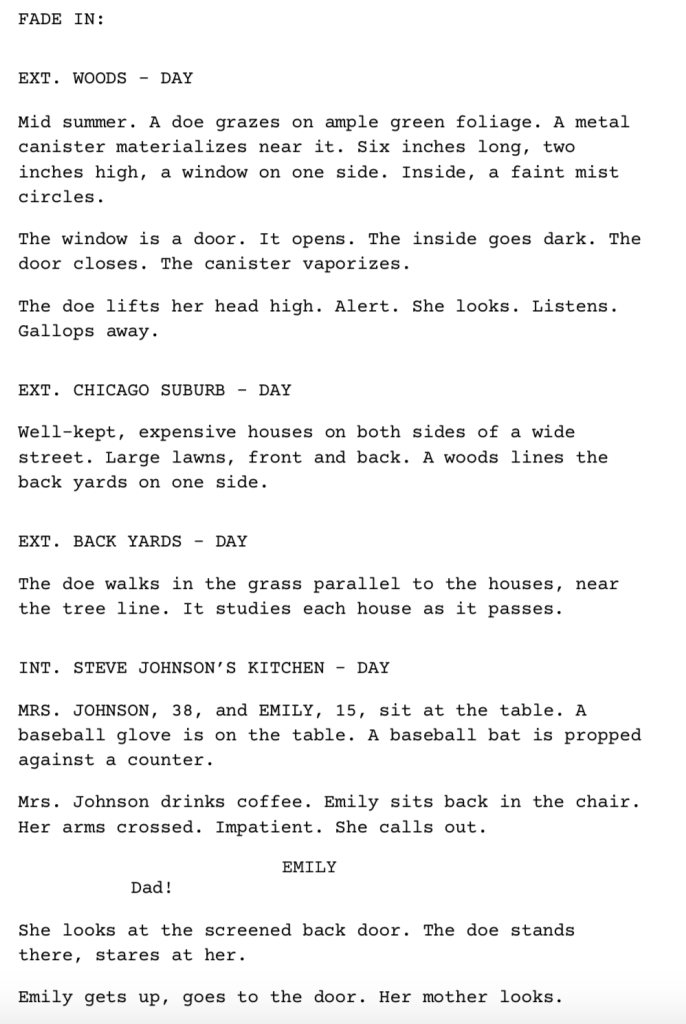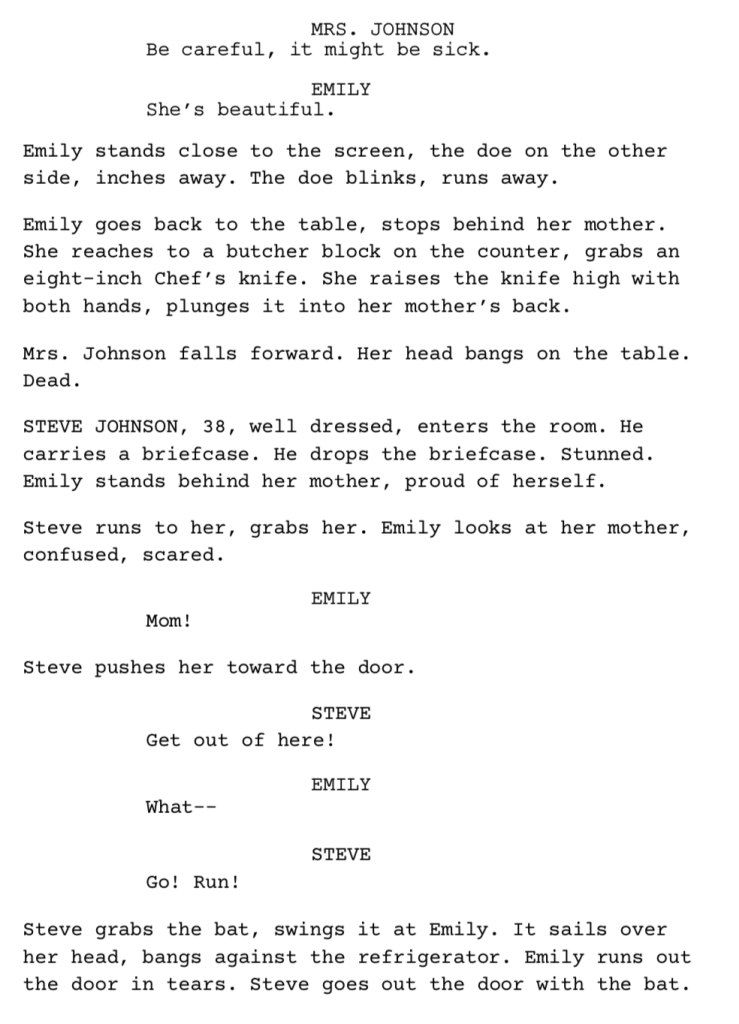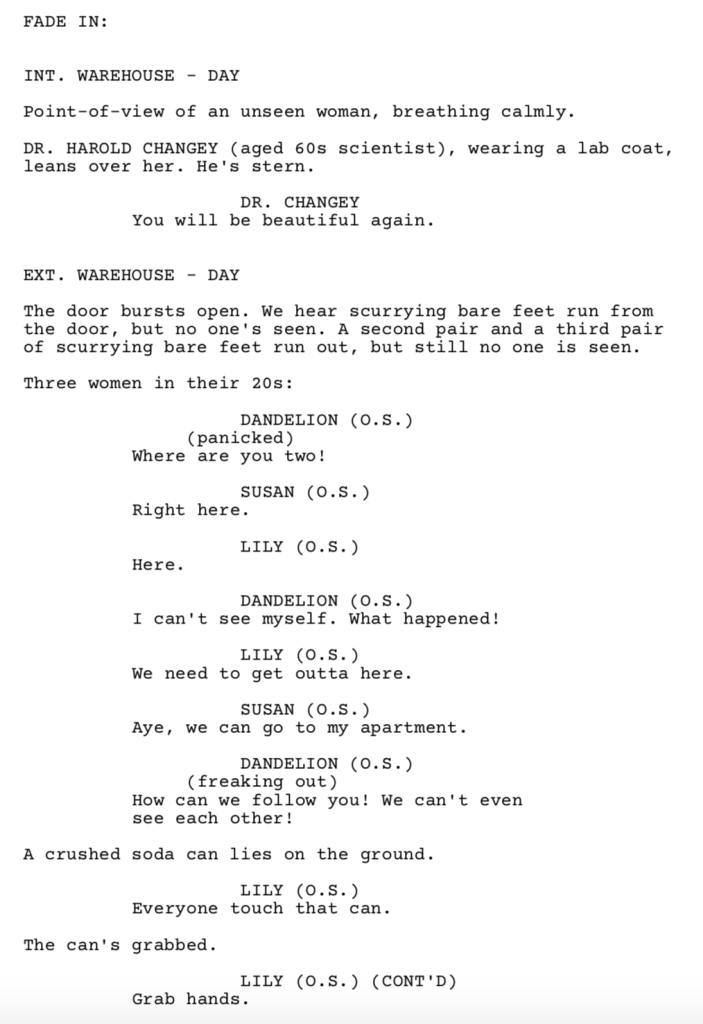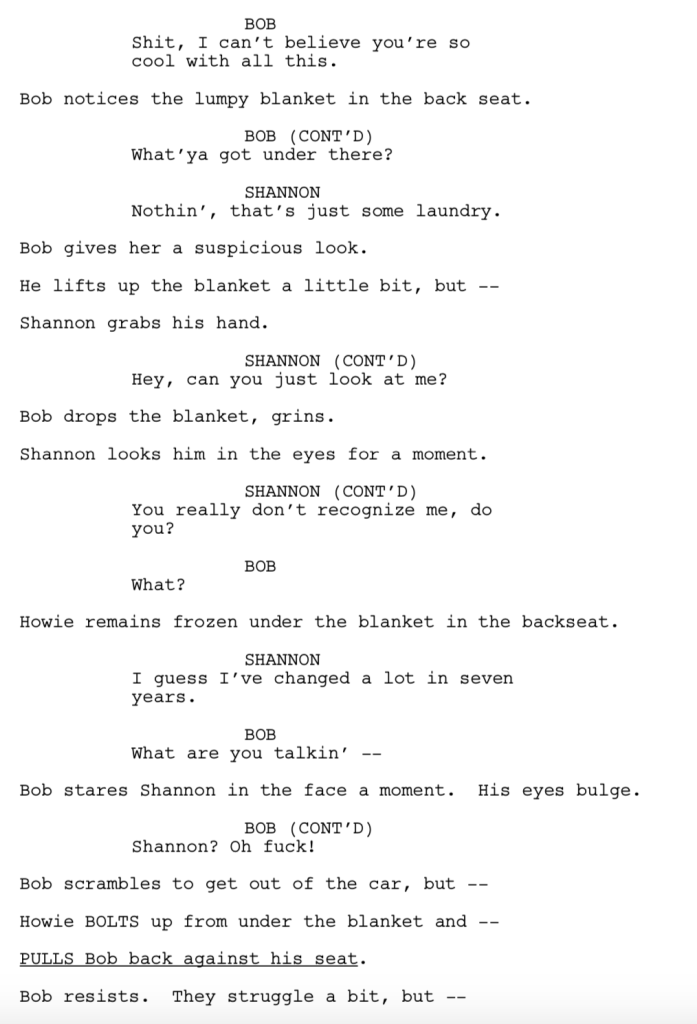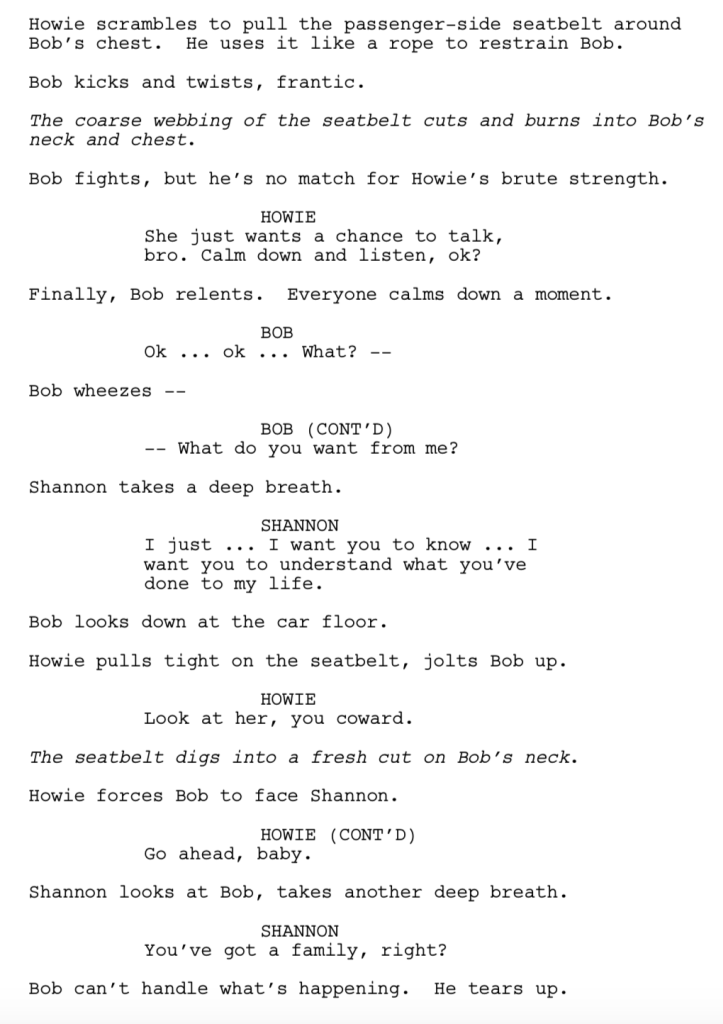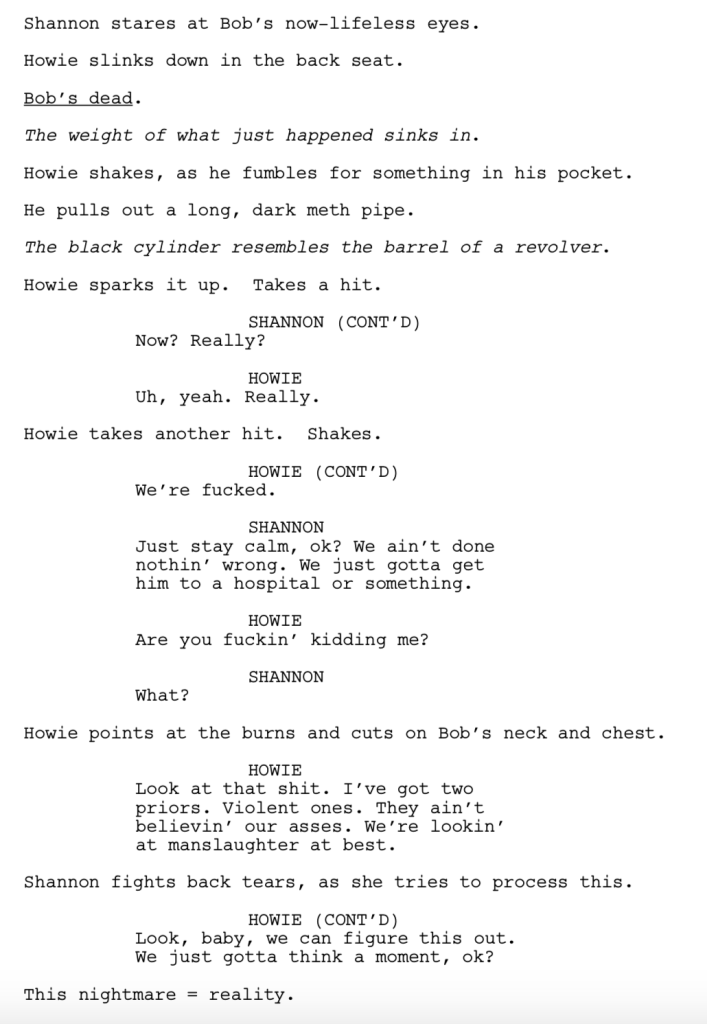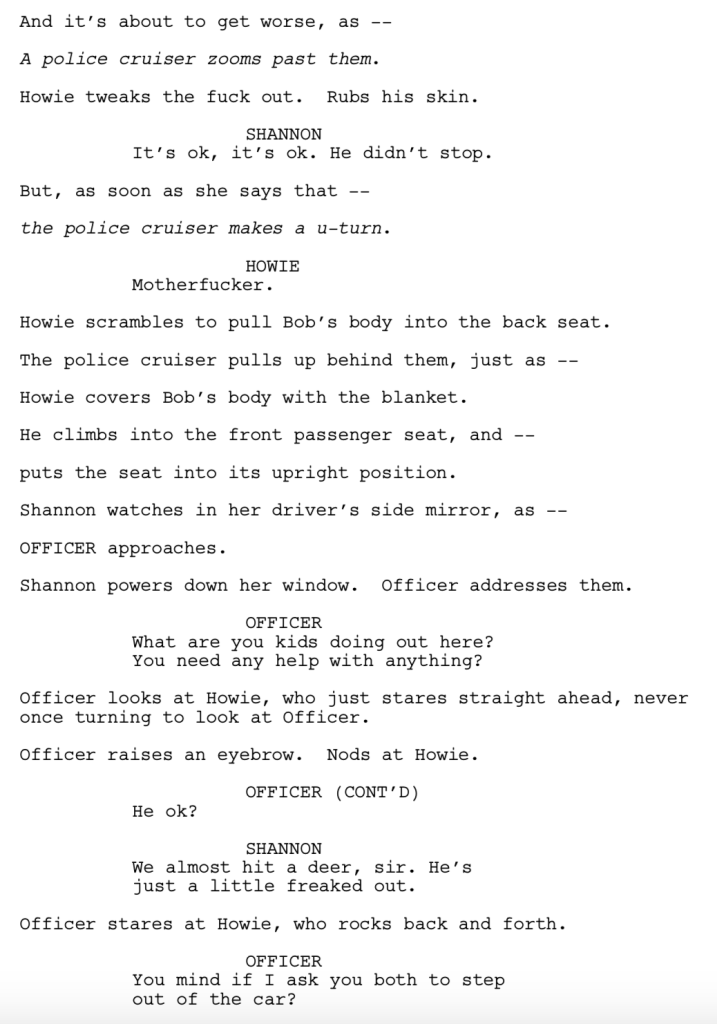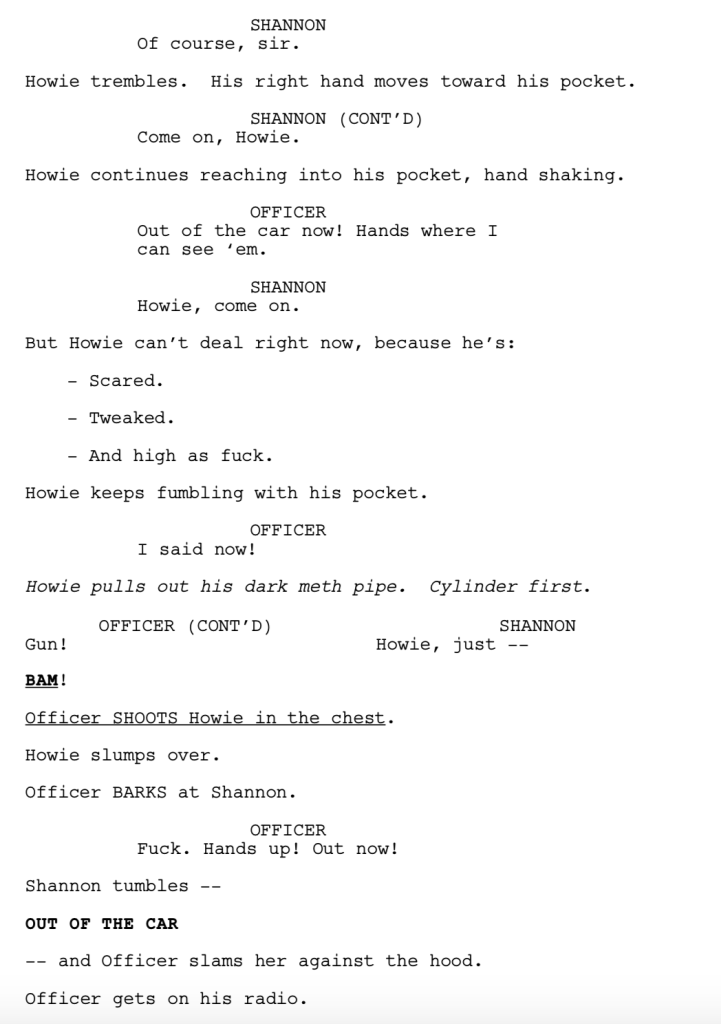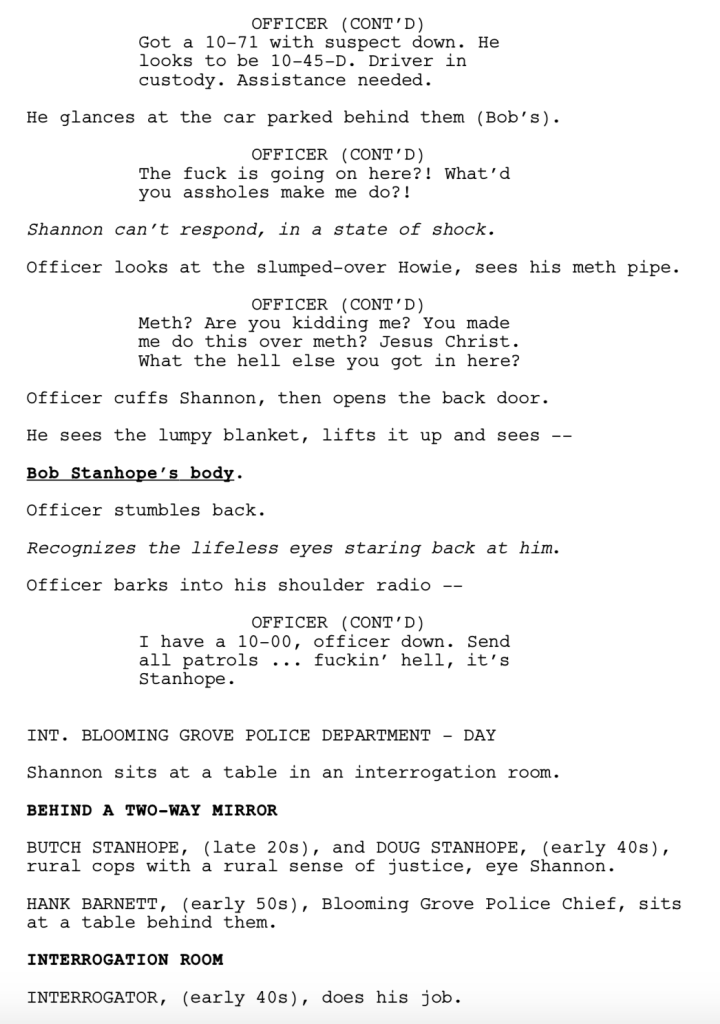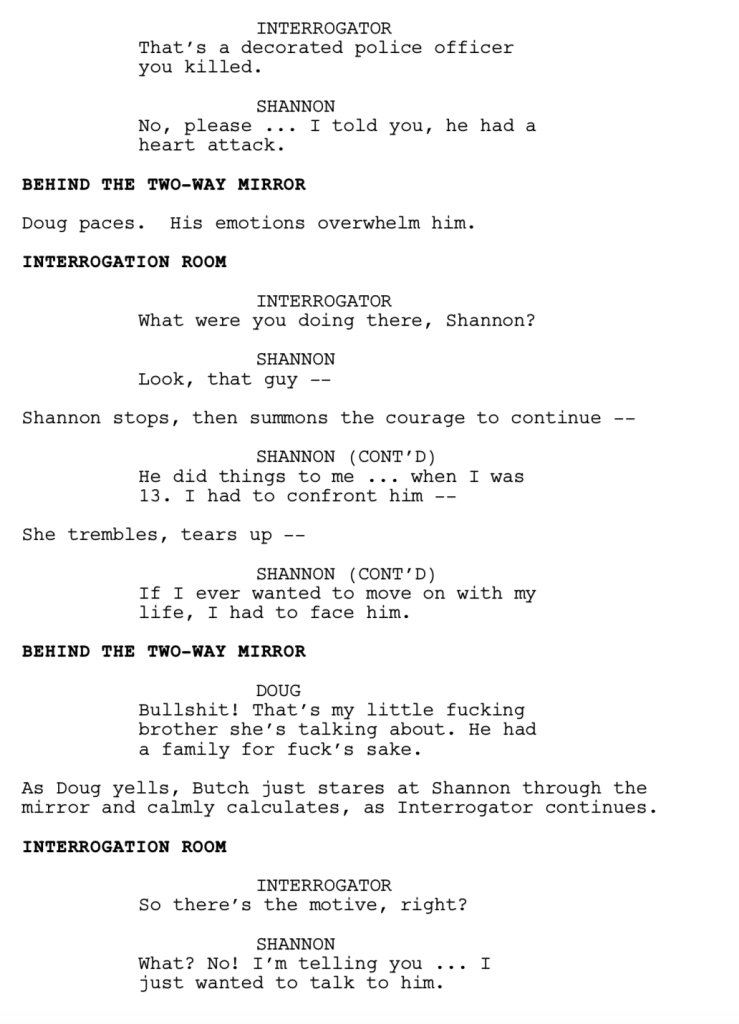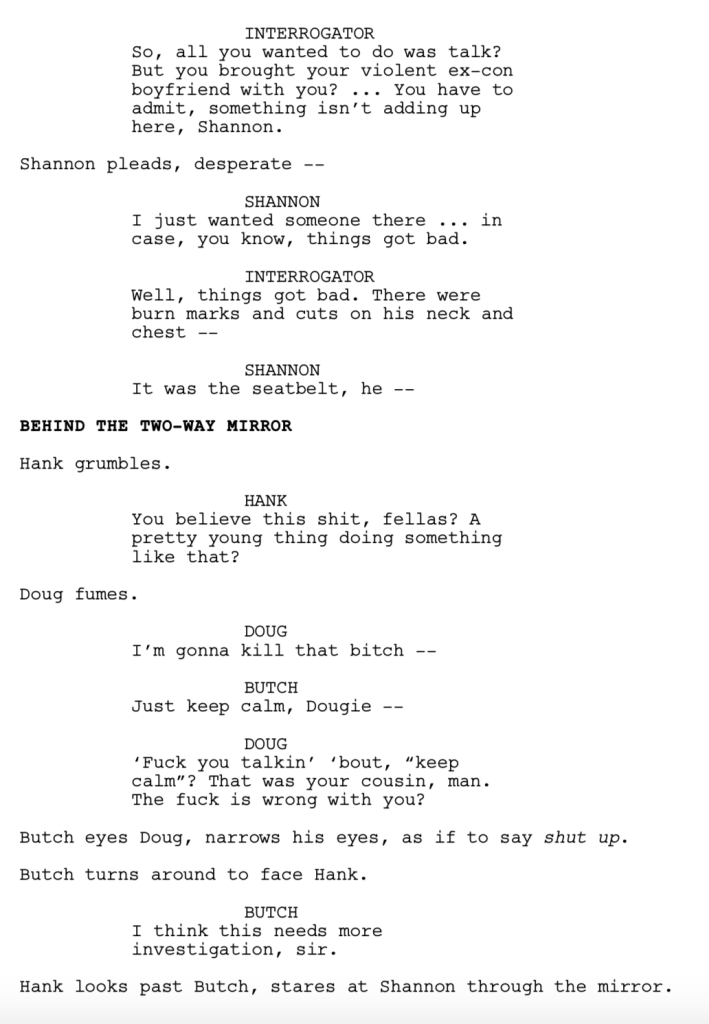Search Results for: scriptshadow 250
Welcome to The Mandalorian Teleplay Chronicles. I will be reviewing every episode of The Mandalorian’s first season with an eye towards helping writers learn TV writing. Whether the show is a breakout hit or a Jar Jar Binks level bust, we’re going to be focusing on how to become better TV writers. Here’s a link to my review of the first episode here, a link to the second episode here, and here’s a link to episode 3.
Genre: Sci-Fi
Premise: The Mandalorian takes Baby Yoda off to a remote planet to hide from pursuing bounty hunters, but runs into a problem when members of a nearby clan ask for his help.
About: Jon Favreau wrote this fourth episode and Bryce Dallas Howard, who starred in Jurassic World and is the daughter of “Solo” director, Ron Howard, directed the episode. Dallas Howard has one directing credit to her name – a short film.
Writer: Jon Favreau
Details: About 38 minutes
It’s days like these that I wish I didn’t know as much about Star Wars as I did. It definitely affects my judgment. I knew, for example, that Jon Favreau wrote three episodes when he pitched the show to Disney. That means Chapter 4 would be the first episode of the show Favreau wrote *after* his original 3 episode self-contained story. So I was expecting something clunky, or, at least, not as purposeful, and that’s exactly what I got.
Something else I knew was that Bryce Dallas Howard would be directing this episode. I’ve been annoyed about this news ever since it was announced. You’ve got the first ever Star Wars show. You’ve got eight episodes. You want to make the show as amazing as it can possibly be. Your first job is choosing directors for each episode. In ANY room with ANY group of people, is there ANY scenario under which ANY person says, “You know who we need directing one of these? Bryce Dallas Howard.”
Of course not. It would never ever happen. There is a list of, probably, 2500 directors in the world who have more experience and deserve more of a shot and who are more qualified to direct a Star Wars episode than Bryce Dallas Howard. Which means that the only reason Bryce Dallas Howard is directing an episode is because someone got her the job. And you don’t have to look far to figure out how that happened. Her dad, Ron Howard, probably said that one of the conditions for him to come in and save “Solo” was that his daughter get to direct an episode of The Mandalorian. And that’s exactly why we get the worst episode of The Mandalorian yet.
Now I’m not going to lay all the blame on Howard. Favreau wrote this episode and he didn’t do her any favors. But when your episode looks like something out of a bad Syfy series, that responsibility usually falls on the shoulders of the direction. Especially when you’ve been given more money than 99% of the shows out there.
This silly episode starts off with the Mandalorian flying Baby Yoda to a remote planet to, I think, hang out for a few weeks and let the heat die off them. Immediately, they go to some Star Warsian Starbucks, and that’s where the Mandalorian sees a woman drinking a puppychino. For some reason, he believes she’s a threat to him, and therefore follows her out back where they get into a fight.
The fight ends in a draw which means that now they’re best friends. Um, okay. Soon after, a couple of locals approach the Mandalorian and ask for his protection. Their nearby clan is being bullied by some neighbors. Mandalorian sees this as an opportunity to get Baby Yoda further away from danger so he takes the deal. And New Chick comes with cause why not?
Once at the village, a hot widowed woman flirts with Mandalorian, telling him he needs to take off his helmet more. Then Mandalorian and New Chick teach the locals how to fight and shoot, a task that takes all of 40 seconds. They then wait for the bad guys to approach. They come that night with an Imperial AT-ST walker and the fight is on. The good guys win but Star Wars fans lose. The end.
In television, the fourth episode is really where you start to see if the show is working. The novelty has worn off. We’re a month in. Are we getting consistent quality entertainment or aren’t we?
From a writing perspective, your approach to episode 4 shouldn’t be that different from your approach to episode 3. You’re trying to expand the mythology to imply a bigger world, a bigger threat. Why are you doing this? Because we want viewers to start making a mental long-term commitment. It’s like dating. You want the other person to start seeing you in their future, not just the next dinner date or next late night booty call.
The Mandalorian didn’t go there though. There was one moment where it had the opportunity to but it didn’t follow through. The Mandalorian makes a comment about, “Why would an AT-ST be way out here in the middle of nowhere?” That’s a good question. Why? Is some fallen Empire villain putting together a nefarious plan? Nope. Turns out it was just some random happenstance thing! Oh well.
What the episode DID do was create a contained story for the episode. This I endorse. Too many TV shows use their episodes as formless blocks of time to move individual character storylines further along. If you’ve ever watched an episode of your favorite show and been disappointed that the episode felt empty and unfocused, this is often the reason.
Remember the very simple formula for creating a storyline for a TV episode. Present a PROBLEM and then have your hero try and SOLVE THE PROBLEM. Here we get this clan’s problem that a nearby clan keeps attacking them. So the whole episode is about teaching the clan to defend themselves and, at the end, fighting off the threat once they arrive.
In theory, the bones for a good episode are there. But there were too many problems.
The most obvious one was that there wasn’t enough time to make an episode like this work effectively. Who is this clan??? We’ve known them for two seconds. Why should we care whether they fight off the bad guys or not? You need time to build up an entire group of people, to build up the characters within that group so that we care for them. When you don’t effectively develop characters, they become cliche. They have no choice other than to be cliche because we don’t know enough about them to differentiate them from other characters we’ve seen. The same principle goes for the group. Don’t know what makes them unique = cliche.
But the real problem with this episode was all of the “Of Course” moments. “Of Course” moments are when something happens in a show/movie because “of course” it does. “Of Course” moments are things we’ve seen in a million other shows and movies, things that have become so ubiquitous that the use of even a few of them can destroy any chance of creating originality. The things we remember in a story are never the things we’ve seen before. They’re the things that are different.
Of course when the Mandalorian sees New Chick they get in a fight with each other that ends in a draw. Of course they both teach the clan how to fight in a cheesy montage. Of course someone is about to shoot Baby Yoda but at the very last second we hear a blast then see that New Chick has shot the killer first. A huge reason why this episode was so lame were all the Of Course moments. Nothing you write is ever going to stand out if you’re drenching your script in Of Course moments.
Another problem with this episode is that it was the first episode that moved from an ACTIVE storyline to a PASSIVE storyline. Your characters weren’t going out there and trying to achieve something. They were waiting for the fight to come to them. WAITING is often a storytelling death sentence. It can work. But the skillset required to make it work is more extensive than simply having your character go after something. The pairing of a “waiting around” narrative combined with a first time director doomed this episode before it was even shot.
Finally, I want to talk about THREADING in television writing. Threading is the act of weaving setups into episodes so that later episodes don’t feel too self-contained. With television, you want the fabric of every episode to connect to the fabric of every other episode. You do this by threading in moments or information in previous episodes.
The show “Evil” has been dropping nuggets throughout the first six episodes that our heroine’s husband is a tour guide on Everest. So when he finally shows up in Episode 7 and they dedicate a whole storyline to him, we’re not asking, “Wait, who is this guy and where the heck did he come from?” The show has been threading in little moments throughout its running time to prepare us for his arrival.
The Mandalorian could’ve threaded in a number of things that would’ve made this episode more connected, starting with the planet. For example, maybe the Nick Nolte alien used to live on this planet and told him about it. As it stands, he chooses the planet because his Navi-computer indicates it’s habitable. It feels random, which subcommunicates a lack of importance to the action. Again, a big reason why you felt nothing for this clan was because they were so random. Had they been more connected to the story, that could’ve changed.
Sticking with my “Playoff Series” analogy, The Mandalorian has now won two games and lost two. My biggest concern is that we haven’t provided the series with an overall goal. If anything, you’re setting up a reactive storyline (keep running away with Baby Yoda) which doesn’t work as well as an active goal (“Lost” – Get off the island). I’ve going to give Favreau the benefit of the doubt because, well, “Baby Yoda.” But this series isn’t on strong enough ground to be giving inexperienced directors jobs based on nepotism. This is freaking Star Wars. Let’s bring in some All-Stars and give the viewers the experience they deserve.
[ ] What the hell did I just watch?
[x] wasn’t for me
[ ] worth the stream
[ ] impressive
[ ] genius
What I learned: Use “tell by showing” moments to improve your dialogue. In this episode, the clan’s widow character asks the Mandalorian when was the last time he took off his helmet in front of others. When a character asks another character a question, one of the WORST things you can do is have the other character give a straight-forward literal answer. “Twelve years,” would’ve been a boring answer, for example. A trick is to look for visual cues in the environment to give the answer more pop. There are a group of kids playing nearby while they have their conversation. The Mandalorian says to her, “I wasn’t much older than them.” Boom. A WAAAAAY better answer. You can’t do this for EVERY response, obviously, but you should be using it every once in a while.
And if so, what can horror writers in 2019 learn from it?
It’s the week of Halloween!!! Woooo-hooo. Any excuse to buy bags of Reeses Peanut Butter Cups is okay by me. This most spooky of spooky holidays got me thinking about the horror genre, specifically what makes a movie scary. There aren’t a whole lot of scary films out there these days. One or two slip through the system every once in awhile. But horror’s biggest entry this year, “It: Chapter 2,” was less horror than it was a giant blender of goofiness.
Where did horror go wrong, I wondered? For the answer, I decided to go back to what many people consider to be the scariest movie of all time, “The Exorcist,” and see if I could identify what it did that horror movies these days don’t. And if you in any way doubt this movie’s influence, consider this: The Exorcist is Warner Brother’s highest-grossing film ever when adjusted for inflation. How bout that?
It didn’t take long for me to notice something I don’t see much of today. The Exorcist is determined to sell the realism of its situation. It’s something writers often forget. In order to scare someone – I’m talking legitimately scare someone – you must convince the audience that the things they are seeing are real. Cause if the world is real, the fear is real.
The clearest example of this is the progression of how we get to the exorcism. In one of those cheapy straight-to-digital exorcism flicks, we see someone possessed and then five minutes later a priest shows up with a bucket of holy water. How realistic is that?
In The Exorcist, we start with Regan getting sick, then having a check-up, then more expensive check-ups, then a spinal tap, then a therapist, then a board of doctors see her, suggest shock therapy, then a priest, then the priest must evaluate Reese and make sure she’s really possessed — then, AND ONLY THEN, can an official priest who’s been trained to do exorcisms come in and perform one.
It was that evaluation that sold me the most. So many scripts I read are researched in five minutes, if that. A cursory look at a wikipedia page dictates the script’s entire reality. And if you approached this script that way, you never would have had a 20-minute sequence that involved bringing a priest in to evaluate the possessed character because you wouldn’t have known that these are the actual rules in the Catholic Church for approving an exorcism.
No doubt hacky writers would’ve had Father Karras start exorcising on Regan within minutes of arriving. And while it’s true the average audience member has no idea the church requires proof before they can allow an exorcism, they still feel something is off when the writer creates their own rules – that this probably isn’t how it goes down. And when an audience member gets that feeling, they start doubting the story.
Let me remind everyone of this screenwriting truism – The goal of every screenplay is to make the reader forget that they’re reading a story. So if you do anything that clues them in that this is all a facade, they’re enjoying your screenplay a little bit less.
Another big takeaway from this movie is just how helpless the situation feels. Helplessness is a key component for making any movie work. You want it to feel like there’s no way the heroes are going to win. That’s the ingredient that gets someone to keep watching. Because once they feel like the characters have a good shot at winning, there’s no more mystery, and therefore no reason to keep watching.
But it’s even more important in horror because the stakes are higher. Death is on the other side of helplessness. So if you don’t succeed, you’re losing lives. There are several scenes in the middle of this screenplay where Chris is pleading to doctors, therapists, and priests to please help her daughter. Please. There’s literally a demon stuck inside of her and there’s nothing she can do about it. That helpless cry is why we keep watching. We want her to find a way.
But the biggest factor in The Exorcist being so much scarier than the horror movies of today is the character writing. If we don’t believe in the characters or feel anything for the characters, we won’t care. We might still jump during a jump scare. We might still fear what that thing is in the dark corner that we can’t quite make out. But we won’t care what’s happening to the people. It’s an empty watching experience.
The Exorcist cuts back and forth between main characters Chris and Regan (at the house) and Father Karras (living his life). While Chris and Regan are going through this traumatic experience, we’re introduced to Father Karras’s relationship with his mother, who eventually dies. And she doesn’t just die. He left her for a church assignment and she died while he was gone. So he has a ton of guilt about what happened.
Why does that matter?
Well, when Father Karras finally comes into Chris and Regan’s lives, we know him. We feel something for him. And I’m not sure today’s screenwriters care about stuff like that. They’re more likely to bring this guy in with a picture of his mother on his phone. Maybe he’ll say, “Hey Ma, this is for you” before he takes on the demon. But, obviously, that’s not going to have the same effect as being with this man during the loss of his mother.
And not only that, they built a history into this character. He’s not just a priest. He’s a priest who was once a boxer. It’s a small thing but it differentiates him from all the other priests we’ve seen in movies. That’s another thing writers overlook these days. If I say to you, “Priest,” what image pops up in your head? I’m guessing a very generic image of a priest. But if I say, “Priest who used to be a boxer,” the image becomes a lot more specific, doesn’t it? That’s what you’re looking for when creating characters. You want to build that specificity so that this story feels different from all the other stories out there.
But the character development goes deeper than that. A lot of people think this movie is about a girl who gets possessed. They think that’s where the fear comes from. But I would argue this movie is about a mother who loses her child. Notice the difference. The first is a straight up horror trope. Possession. The second is something very human and relatable. And if you watch this movie again, you’ll find that many of the scenes are dedicated to Chris’s desperation to help her daughter. At one point she’s crying on the priest’s shoulder who she just met two minutes ago, begging for help. That’s why this movie hits you harder than the average horror flick today. It’s more about (or just as much about) this woman trying to save her daughter than it is a daughter who’s been possessed.
Now let me make something clear. It’s possible to overdo this element. You can make a really dramatic character piece inside the horror genre. But if you go too far, it stops being horror. People still want to be scared. They still want that thrill. So you have to include those scenes where Chris is trapped in the room and her daughter’s head spins around. If all of your scares are character driven, you get stuff like The Babadook. The Babadook is a solid movie. But it’s no Exorcist. And that’s because it doesn’t deliver on the horror element as much as it does the character development. So it’s important to respect that balance.
Now I’ll be the first to admit, you couldn’t make The Exorcist the same way today. It moves too slowly, especially the beginning. But the movie reminded me that if you have a strong concept, a respect for the reality of your subject matter, and a dedication to character development, that it’s okay to take your time in a story. We’re all told (and I’m guilty of this) that you must keep your script moving, keep it moving, keep it moving. But horror can benefit from a properly-paced slow build. That’s because there’s something about a slower story that mirrors the speed of real-life. It, therefore, helps convince the reader that what they’re experiencing is real. And like I said at the beginning of this, if you can convince someone that your story is real, you can invoke a true sense of fear.
First of all, I want to thank everyone who sent a submission in for Halloween Amateur Showdown. I got a lot more submssions than I thought I would.
BUT!!!
I have to take a moment to plug my logline service (e-mail me at Carsonreeves1@gmail.com with the subject line “logline” for a consult). So many of these submissions shot themselves in the foot due to terrible loglines with fixable issues. If you’ve never received instruction on how to properly write a logline, you should seriously consider a consult. The basic option is just $25 and the deluxe is $40. And, trust me, you’ll have a much better feel for how to properly write a logline after you get one.
Moving on. I tried to vary the TYPES of horror scripts as much as possible. That way we didn’t get 5 contained horror movies. So that may have been why your script didn’t get chosen. Other reasons your script didn’t get picked: There were a lot of loglines that weren’t clear. Some that were too outlandish. Some that sounded so simplistic I thought they were a joke (“A man believes he’s living in a haunted house and recruits his family to help him”). Some that were embarrassingly general (“A group of friends head out to a remote setting and, fearing an unspeakable evil, prepare to face it while also battling demons within.”). Some that sounded too similar to recent entries. And some that may have appealed to others but simply weren’t my jam.
What follows are the pitches that rose to the top.
Amateur Showdown is a single weekend tournament where the scripts have been vetted from a pile of hundreds to be featured here, for your entertainment. It’s up to you to read as much of each script as you can, then vote for your favorite in the comments section. Whoever receives the most votes by Sunday 11:59pm Pacific Time gets a review next Friday.
Got a great script that you believe can pummel four fellow amateurs? Send a PDF to carsonreeves3@gmail.com with the title, genre, logline, and why you think your script should get a shot.
Title: Genesis
Genre: Creature Horror
Logline: Trapped in a mountain resort by a parasitic fungus that transforms its victims into deadly hosts, a timid CDC epidemiologist must learn to lead the group of mismatched survivors to escape this primordial terror.
Why You Should Read: After my last entry on the site, “The Crooked Tree,” was selected for a previous Amateur Showdown, I received invaluable feedback from the readers that I applied to my latest effort, “Genesis,” which explores the consequences of genetically-altering Mother Nature. Drawing inspiration from a slew of 80s classics, my career as a Registered Nurse, and a few real-life scientific oddities, I crafted a unique creature-feature that serves as my love letter to this subgenre. I hope my entry impresses you enough to select it for a coveted spot in this year’s Halloween Showdown!
Title: Street View
Genre: Horror/Found Footage
Logline: When a Google Street View driver unknowingly captures footage of a murder on a desolate highway, she must figure out what she has and who wants it before she becomes the next victim.
Why You Should Read: Why you should read it: Causeway Films in my native Australia (The Babadook, The Nightingale) recently broke their rule about not accepting unsolicited scripts after my pitch to them but provided only brief feedback about why they ultimately opted against adding it to their upcoming slate, so I believe I’m close enough that the Carson words of wisdom can hone it into something that I can get made. I feel it has the commercial appeal of the found footage/horror genre but also delves into deeper themes regarding the increasing privacy intrusions of big tech in our lives and the increasing divisions between people (particularly city and rural) that stem largely from Big Tech-facilitated ideological echo chambers. The Street View car driving through forgotten towns strikes me as the perfect embodiment of these themes. I’ve also had the awkward conversation of requesting the use of a rural property belonging to a friend of mine to film a home invasion scene where my friend had previously been a victim of a home invasion at that property! I think that chutzpah alone deserves a read. Also, this is the real camera used to take street view photos. The horror practically writes itself!
Title: POSSESSIONS
Genre: Supernatural Horror
Logline: An estranged daughter returns to her childhood home to help with her mother’s extreme hoarding only to discover her mother cursed by one of her many, many possessions.
Why You Should Read: Way back in December (Re: The Interventionist) you asked if anyone had done a hoarder horror movie. And then your review of 10/31 had a hoarder house in it and I was like, damn, I better finish my horror feature already! So after months of it sitting there waiting for it to be rewritten (again), I dug down and got to it. Gone is the Dead Kid Backstory in favor of a story more focused on a woman learning to take care of her aging mother… who happens to be possessed. Yay! I welcome any Marie Kondo / KonMari method jokes. Enjoy!
Title: Catharsis (note to writer: you need to retitle this, “Rage Room”)
Genre: Social Horror
Logline: Following a traumatic incident in a rage room, a spineless office worker develops strength and self-confidence — and an insatiable, murderous aggression that threatens to take over.
Why You Should Read: Rage rooms are simple: pay a small fee to occupy a room for 10-20 minutes and SMASH THE FUCKING SHIT out of mundane, breakable objects. With methods of choice ranging from baseball bats with home run dreams to sledgehammers that have never met something they couldn’t pulverize, you can customize your destruction of plates, printers, and other office or domestic fodder to your heart’s blood-pumping delight. All in the name of “self-care.”
In our current socio-economic and political climate, our globe is warming up to rage rooms in nearly 30 countries, with the US of A boasting 250+ locations that have increased exponentially in the last five years. The real kicker? The pursuit of catharsis often recycles its initial stimulants of stress and aggression. Meaning… this trend ain’t going anywhere soon. And just like escape rooms, you are trying to solve a puzzle: “What do I have to destroy to create a little peace and quiet?”
With this “Catharsis,” great power comes with great responsibility to gain more power, even if the objects in the way are made of flesh and bone. A good horror story should tackle relevant subject matter or universal fears or the dark symptoms of the human condition. Or, hey — crack open this PDF and try to find all three!
Title: INFANT
Genre: Horror
Logline: A sadistic rapist/murderer is captured by a quartet of women and infantized (shaved, crippled so he’s forced to crawl, diaper, etc) in order to re-educate him on how to treat women and act in society but the women instead use him for their own dark psychological needs until one decides they’ve gone too far and plots to free him.
Why You Should Read: INFANT is a proton torpedo into the Death Star of current society that was influenced by Frederick Friedel, Canucksploitation movies like CANNIBAL GIRLS and DEATH WEEKEND and LAST HOUSE ON THE LEFT.
Genre: Thriller/Drama
Premise: (from IMDB) Five former Special Forces operatives reunite to plan a heist in a sparsely populated multi-border zone of South America.
About: Frequent collaborators Mark Boal and Katheryn Bigelow were set to make this film back in 2010 with Tom Hanks and Johnny Depp. As happens all the time in Hollywood, development lagged long enough to see both Hanks and Depp leave, and soon even Bigelow dropped out so she could make Detroit (bet she stands behind that decision). The movie rose from the ashes when JC Chandor (Margin Call, A Most Violent Year) came on. He was joined by Depp again, Will Smith, Tom Hardy, and Channing Tatum. But the film wasn’t out of the clear yet. With just weeks before shooting, everything fell apart and the producers had to start all over again. That led us to the current cast, which includes basically plays himself Ben Affleck, constantly slips into a British accent Charlie Hunnam, and Chandor’s Violent Year star, Oscar Isaac.
Writer: J.C. Chandor & Mark Boal
Details: 125 minutes
Correct me if I’m wrong but I think this is the first time in history that the major movie release of the weekend came out on Netflix. What does that mean? I don’t know. I know Steven Spielberg has an opinion or two about it. But what’s unique about Triple Frontier is that it’s clearly an experience that works better on the big screen. This isn’t some goofball comedy. The helicopter sequence through the South American jungle alone is stunning enough that it would’ve shined at the Arclight. And yeah, I know, they put it out in theaters for a week. But it wasn’t a real release. It was in case the movie was nomination worthy.
As a lot of you know, I loved the Triple Frontier script. But I’ve been tepid about how it would translate, specifically because of Mark Boal. Boal gives you a specific kind of movie and doesn’t seem to know how to work outside of that. I remember watching Boal’s Zero Dark 30, being underwhelmed, and wondering why. On the surface, it should’ve worked. We’ve got a real life story about the hunt for the most notorious terrorist in American history. And yet it was boring. Why?
Then it hit me. The script only hit one beat: Serious. Every scene was about the serious nature of what they were doing and the serious problems they ran into and the serious characters who had serious opinions and serious discussions about those serious opinions. A movie should be a roller coaster. It should not be a train ride. We have to go up and down, sometimes even in a loop, to keep the story interesting. Boal doesn’t know how to do that and his screenplays suffer as a result. They’re never bad. But it’s impossible not to become a numb viewer when every scene is the same.
JC Chandor is a better screenwriter than Boal. But he operates in the same world. His stories tend to take themselves seriously. So I wondered if a collaboration between the two would do what you want collaborations to do – elevate the material. You want your co-writer to be strong where you’re weak, and vice versa. Not sure that was the case here. And yet the old draft I read was strong. Let’s see how the movie turned out.
Pope (Oscar Isaac) is an ex special forces soldier who’s doing bad guy clean-up work in South America. When Pope learns that one of the biggest drug dealers in the world has tens of millions of dollars stashed at his home in the jungle, he recruits his old special forces buddies, Redfly (Affleck), Ironhead (Charlie Hunnam), Ben (Garrett Hedlund) and Catfish (Pedro Pascal), to steal it. The “hook” here is that these guys have always abided by the law. This is the first time they’re going to break it.
The group flies to the Triple Frontier, the tri-border area along Paraguay, Argentina and Brazil, and start prepping for the heist. Redfly is the taskmaster. He makes it clear they’ve got a small window to get this done and if any red flags pop up, they bail. The group is shocked when they finally execute the heist and there’s 10 times as much money as they planned for. Now they have a new challenge – get all this money back to the US somehow. They’ve got a helicopter but it wasn’t ready for this kind of load. They’ll have to get creative and take some chances if they’re going to succeed. Of course, in the end, greed gets the best of them.
I liked Triple Frontier.
But it’s a frustrating movie in a lot of ways.
Somewhere along the 10 years of development, Boal and Chandor forgot to hit the beats that really matter, starting with the title itself.
In the script, it’s made clear why the Triple Frontier is such a badass place. They explain it’s the earth’s equivalent of Mos Eisley, one of the most crime-ridden dangerous places in the world. However, in the movie, you don’t even know what Triple Frontier is. You just know it’s the title. The reason this is frustrating is because the history behind the triple frontier sets up why this one guy has so much money stashed at his house. He’s the top dog in one of the most lawless places on earth.
This problem of forgetting to highlight the big moments when they happen continues throughout the screenplay. When the team gets to South America, we spend 25 minutes preparing for the heist. Then, out of nowhere, we’re in the house executing the heist. The moment came so stealthily, I assumed they were doing a test run. About midway through I realized this was the real thing. The heist is the most important moment in the movie! Why wouldn’t you make it clear it’s happening!
One of my favorite moments from the script was when they learn they’re not stealing 25 million dollars. They’re stealing 250 million dollars. Everyone’s excited but they also realize this changes everything. They weren’t prepared for this kind of load so now they have to rethink the plan. But in the movie, this moment occurs passively. They’re at the helicopter and Catfish and Pope have this conversation that amounts to, “Oh, by the way, we have 250 million dollars now so it’s going to be a little trickier.”
This was the irony that made the script so cool! In every one of these movies, the thing that goes wrong is that they end up with LESS money than they hoped. Triple Frontier flipped that and said, ‘No, we’re going to give you more. Lots more!’ But what seems like a good thing is actually what does them in, cause they didn’t plan to handle this much money but their greed tries to make it work anyway.
As for the changes in the script, I noticed a couple of things. The first is how the money is found. In the script, they go to the room where the money is supposed to be but it’s not there and they freak out. Then someone notices that the ceiling is leaking cause it’s raining outside. Which means they probably moved the money. The group keeps on looking and, indeed, it’s in another room. I liked the scene because you always want to throw curveballs at your heroes. It can never be easy for them. They show up, they think the money’s gone, but then they realize it’s somewhere else.
Boal and Chandor improve on this, however. Instead, the group shows up, the money isn’t there, they’re momentarily defeated, then someone realizes it’s in the walls. So they start breaking through the walls and ripping the money out. This achieves two things. First, it’s way more cinematic. The previous scene had them taking money off a pile of money. This version has them breaking walls to get the money. It just looks better. It also adds a component of urgency – do they have enough time to break down all the walls and get all the money? It turns out they don’t, which throws the operation off.
The other change they made is jumping into the heist sooner. In the script, the prep section was the longest section of the script. And, to be honest, not a lot was happening there. Prepping is tough in screenwriting because there’s something inherently repetitive about it. And I think Chandor realized that at some point and sped it up. I would even venture to guess that they shot the extra prepping and only realized in editing that they didn’t need it. Which probably has something to do with the neutered announcement of the heist itself.
I loved the helicopter stuff in the script and I love it here in the movie. The best you can ask for in screenwriting is a story that shines by showing and not telling. So if you’re writing a movie about greed, having a bunch of characters talking to each other about how much they love money and how they play the stock market and what car they just bought – that’s the worst possible exploration of greed. The best is in this movie. A helicopter is carrying a bunch of money through mountains that it’s not light enough to get through. So the characters literally have to decide how much money is worth their safety. We see their greed in that they can only push out so much money, even if it means risking their lives.
Another great example of this is Redfly (Ben Affleck). He’s the most practical of the group. He’s the one saying, “We’ve got this many minutes, we’ve got to hit this checkpoint by this time, that checkpoint by that time, if there’s any fluctuation, we ditch.” And then, when they find the money in the walls and they’re desperately trying to bash out as much as possible, it’s Redfly who’s the first one yelling out, “Don’t worry! I gave us a buffer!”
I can’t get past how much I love this idea. You’ve stolen all this money but to get from Point A to Point Z, you have to keep making decisions about how much you can leave behind. It’s the ultimate exploration of greed. And while I would’ve liked for Chandor to treat this more like a Hollywood movie with big beats as opposed to a “true story” like Zero Dark 30, I was still entertained the whole way through.
[ ] What the hell did I just watch?
[ ] wasn’t for me
[xx] worth the stream
[ ] impressive
[ ] genius
What I learned: HIT. YOUR. MAJOR. BEATS. HARD. Hitting your beats means when a major moment comes up in your story, you give it its proper due. For example, if a character has a baby, there’s an excitement that should permeate everyone associated with that character. The new mother doesn’t text her mom, “Had the kid. Still on for dinner, Sunday?” You must be true to the level of intensity that moment would provide. Triple Frontier doesn’t hit its big beats hard enough, from the triple frontier to the heist to the amount of extra money they stole. Those moments needed extra attention.
It is Week 3 of the First 10 Pages Challenge! For those of you who don’t know what that is, the First 10 Pages Challenge is something I set up at the beginning of the year that asks you to write something unputdownable. You have until February 10th to enter your pages, which you can do at carsonreeves3@gmail.com. Every Thursday, I’ve been posting five entries and explaining why I stopped where I did. You can read last week’s entries here and the first week’s entries here. Today we’ve got five more.
Some of you have expressed surprise at how quickly I’ve given up on some of these entries. You went so far as to say, “I would’ve kept reading.” You know what my response to that is? Unless you contacted me or the writer and asked us for the rest of the script, you wouldn’t have kept reading. We’re not trying to write pages that someone keeps reading because they’re conveniently still in front of them. We’re trying to write pages that if you got to page 3 and the rest of the file was corrupt, you would immediately e-mail the writer and get them to send you the rest of the script because YOU NEEDED TO FIND OUT WHAT HAPPENED NEXT.
You might think this is extreme. That I’m asking the impossible. But seriously, do you think Hollywood is some cocoon of good vibes wrapped in hugs and encouragement? Where each screenplay is read with rapt attention and responded to with the promise of a future job if you just “keep trying hard?” This is one of the most competitive industries IN THE WORLD. Nobody cares about you. In fact, because writers are faceless, people in this business have no issues actively hating you. You are someone who can chew up 2 hours of their day with wandering drivel when they’ve got 10,000 more important things to do. Do you think, under those circumstances, that someone’s going to give your script their full attention because you’re trying hard? Because you have a pretty good first scene with a decent main character and wait til they get to page 45 because that’s when your screenplay really picks up? Be real.
You need to TEAR THESE PEOPLE OUT of their existence with your pages. You need to make them forget about all that other s*&% they’ve got to get done that day. A good writer with a great opening 10 pages can achieve that. But if you’re going to play this b.s. idealistic card where people give you the benefit of the doubt regardless of how you start your screenplay, think again. You need to hook the reader. That’s what this exercise is about.
Now let’s get to today’s entries.
This is one of the more interesting entries we’ve had on First Ten Pages Thursday because the writer’s doing a lot right. We have a couple of paragraphs setting up the scene. They’re not great but they end with an intriguing detail – that this is a federal penitentiary ferry. The reason this is important is because I’ve seen tons of scripts start inside federal penitentiary BUSES. But I’ve never heard of a federal penitentiary ferry before. Already we’re starting off with something unique, which is a good sign.
The writer doesn’t waste any time setting up an intriguing potential problem – that there’s another boat trailing them. This is a critical component to the scene because the writer has opened a line of suspense. We will now stick around at least until we find out what that other boat is about.
However, this is where the first slip occurs. The interplay between the characters is too basic. “Hey, why don’t you tell me how it feels to be screwed for life.” “Maybe you should ask your wife.” I’m not even sure that comeback makes sense. Just lost a little confidence in the script. Then, when the bad guys in the other boat do show up, the attack is really straight-forward. A guy gets shot, Jimbo tries to speed away. I literally went from Level 9 Interest to Level 3. And this was when the real life nature of this First 10 Pages Experiment reared its head. I didn’t even realize it but I had switched over to my browser to check my e-mail. I stopped not because I was thinking, “Should I or shouldn’t I keep reading?” My mind literally wandered to the point where I didn’t even realize that I had left the script.
Let me repeat: The goal of this exercise is to keep the reader’s interest for ten pages. If the reader is checking their e-mail, you’ve lost. And here, as harsh as it sounds, it was simply one predictable page that did the script in. The excitement of the opening was undermined by too basic of a reveal. Don’t take any lines off, guys.
This is a common reason why most readers give up on scripts. It’s not even a question of “Am I captivated or bored?” It’s that the events happening on the page don’t even make sense. There’s a line between mysterious and nonsensical and a lot of new writers don’t know where that line is.
A bunch of faceless phone alarms go off? Is that an intriguing opening story question? I’m not sure it is. Are these morning wake-up alarms? I’m assuming it’s morning but the sluglines say “DAY” and there’s no mention of morning anywhere. I’m going to make an educational guess and go with morning. But that begs a new question. Why is a 17 year old on his bike in the morning before everyone else is awake?
We highlight that a door to one of the houses is wide open and that that’s “a bit odd.” I’ve seen lots of open doors in my life and never once felt that it was odd. Henry then calls his dad and “Julia,” who I’ll assume is his step-mother. The “no longer in service” automated message provides a modicum of curiosity until one second later when Henry pulls up to his house where his dad and Julia live. If his house was one second away, why did he call his parents?
This writer needs to work on the sophistication of his delivery. You need to think about why characters are doing things and not just do them because you think it would make for a cool moment. You have to think of your characters as living breathing human beings who are governed by the same laws of logic and reason we are. Nobody calls their father to see if he’s home when you’re going to see that he’s home in 3 seconds.
Kudos to the writer for starting their script with something that grabs our attention. However, this is another case of weird shit happening without a lot of thought put into why or how it fits together. Before we get there, the first thing that stands out is the weird spacing on this document. I’ll say it again: people who are serious about screenwriting use professional screenwriting software. If I see a mistake as basic as weird spacing, that’s a red flag.
Next up, we have a six inch canister with a window. What do you mean a “window?” Does Ant-Man live in this canister? Literally within the first paragraph, we’ve got two red flags. The only reason I keep reading is because at least something’s happening. And I’m briefly vindicated when the daughter stabs her mom in something that promises a “Bird Box” like concept. However, the father’s response to this killing is so bizarre (“Leave!” – then throws a bat at her) that I know this is seconds away from falling off the rails. This feels like it was whipped together in ten minutes. Not going to cut it.
I can’t enjoy something if I don’t understand what’s happening. This doctor says he’s going to make someone beautiful. The next thing we know we’re looking at footsteps. So I guess somebody is invisible? How did we go from a movie about beauty to a movie about invisibility? Then this girl is joined by two other patients? Where did they come from? Are they using a group invisibility plastic surgery discount? — Some writers write without ever considering the reader. They’re so far in their head that they don’t realize what they’re writing doesn’t make sense. Put yourself in the mind of the reader. Does your scene play out in a clear and concise way when reading it from the other side?
Well lookie here. The first submission to get me to read all 10 pages! Congratulations to Bill Lawrence. Now in the spirit of full disclosure, I didn’t LOVE these pages. But the scene was constructed in such a way where it was hard for me to put the script down. Now here’s where things get interesting. You guys DIDN’T like these pages. This script was an Amateur Offerings entry two months ago and only received one (!!!) vote. I’ve tried to figure out why.
I suspect that people didn’t vote for it because the situation is too generic. It definitely moves. It has tension and conflict throughout. But it lacks any sense of originality. There is nothing new or fresh here.
I realize this is confusing. This is the first script to get you to read all 10 pages and you’re not over the moon about it, Carson??? Look, I’m a little confused myself. I’ll tell you this though. The writing was so sparse and easy to read, there wasn’t a reason to STOP reading. That’s the power of writing clear and concise prose. I think that if Bill kept this structure but added some elements that were more original or unexpected, I would’ve e-mailed him and said, “I need to read more of this.” For example, of course the man who sexually assaulted Shannon is fat and ugly. It’s cliche. What if he was an upstanding well-put-together pillar of the community instead? Stuff like that that’s not so on-the-nose. With that said, this is the only script that got me to read all 10 pages. So in this unofficial competition, it’s in the lead!

